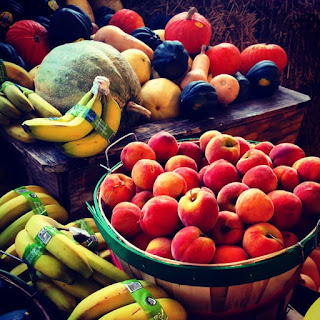 |
| Photo Credit |
WE
LOVE OUR BABIES! From the very first moment, we want the best for our children:
the best food, the best education, the best love. As new parents quickly
discover, “best” for the baby often means “work” for the parents, but the kids are
totally worth it! Few "bests" seem to take more work than making sure baby has the best food possible. Baby food, including formula, is expensive, and sometimes very confusing. Here are some basics about nutrition, as well as a simple way to make baby food at home to save money while still giving your child the best!
Best Baby Nutrition
The very best food for a newborn is breast milk. The mother’s milk provides immunity to disease and allergies, and nursing provides emotional bonding that is vital to a child’s emotional development. The best for early nutrition is to nurse (or pump and bottle feed) your baby for the first 6 months of life or longer. If this is not possible for you, newborn infant formulas sold in the grocery stores will still give your baby their best nutritional start in life as long as the formula is used according to the directions on the box. Do not add more water than the directions advise! Your baby will not get enough nutrition! Cuddling your baby as you bottle feed them helps provide the same kind of skin-to-skin contact as breastfeeding, which babies need to feel secure in their parents’ love.
Bests in Solid Food
Somewhere around four to six months of age, a baby
develops the ability to swallow food. This does not mean breastfeeding should
stop, however. Recent studies by the American Academy of Pediatricians seem to indicate
that babies have an easier time digesting a new solid food if they are still
breastfeeding.
 |
| Photo Credit |
Commercial baby food can be quite expensive, so making baby food at home is a “best” way of saving money! You will need: vegetables or fruit, a stove, a sauce pan, an ice cube tray, and a blender or food processor. You can cook and use fresh vegetables and fruit or use frozen produce. Freezing is closest to fresh because freezing retains the most nutrition compared with other food preservation methods. Using frozen vegetables and fruit can further reduce the cost, making it better for your budget.
When making
baby food, do not add salt or sweeteners; the food itself provides enough flavor
without them. To avoid choking, a baby
should only eat soft, completely pureed foods. Luckily, most blenders and food processors do a pretty good job of getting things to the right texture.
 |
| Photo Credit |
Vegetables and hard fruits will need
to be cooked until soft, then blended in the food processor or blender until
absolutely smooth. Peel and wash the veggies and fruits with skin, then cook them until completely tender in a pot of boiling water. When done, drain them and blend them up. You may need to add a little bit of water, breast milk or
formula to help them blend properly. Particularly good vegetables for baby food are sweet potato, carrots, and green peas, as they get very soft when cooked.
After your mixture is smooth, pour it into ice cube trays and freeze. When the baby is
ready to eat, take one or two “ice cubes” out and warm them up. Ice cubes are
just the right portion size for beginning eaters.
Most
pediatricians recommend trying one food at a time, a little bit at a time, for
three to five days before trying another new food. This helps to acclimate the
child to a new texture, and to get the child’s digestive system ready for something new.
Best Food Safety
Infants are very vulnerable
to food-borne illness; something that gives an adult a mild case of diarrhea
can be life-threatening to an infant. The same food safety principles of
“Clean-Separate-Cook-Chill” used for regular family cooking are particularly
important to follow with your baby.
| Photo Credit |
-Separate: Separate raw meats, poultry,
seafood, and eggs from other foods—in your shopping basket, in your
refrigerator, and while preparing food—to avoid cross-contamination of bacteria in
the raw meats to clean, ready-to-eat foods. Additionally, for commercial or
homemade baby food, place your serving of baby food into a small, separate bowl to feed
the baby. Whatever is left over in the feeding bowl must be thrown out to avoid
the growth of bacteria in the food.
-Cook: Meats, poultry, seafood and eggs
must be cooked thoroughly to kill bacteria in the food.
-Chill: Refrigerate or freeze foods as
soon as possible to avoid bacterial growth.
WE LOVE OUR BABIES! From the beginning we want the best for them, and love, good nutrition, and safe food handling practices are by far the best start they can get!
WE LOVE OUR BABIES! From the beginning we want the best for them, and love, good nutrition, and safe food handling practices are by far the best start they can get!
Cathy Merrill is holding a class about homemade baby food from 9:30-11 am on March 16, 2017, in room L-600 of the Utah County USU Extension Building, located at 100 E Center Street in Provo. Parents are welcome to bring their children, but child care will not be provided. The cost is $5 per person.
Look online at extension.usu.edu/utah for more details, and for a list of other classes being offered.
People living in other counties can find their local extension's website and extension events, including classes, here https://extension.usu.edu/locations.


Nice Post. This Information will Helpful for Children's Diet and Nutrition Food.
ReplyDeletek
ReplyDelete